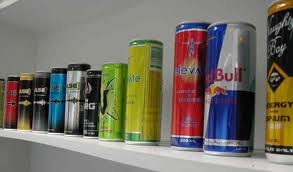Not only humans have trouble with overdosing on caffeine — New Zealand’s National Poisons Centre has had five calls about pets with problems.
 Staff at the centre –which gets about 35,000 calls a year — said today they had received received 128 caffeine-related calls over the seven years to the end of 2010, of which 122 were actual exposures and 117 involved humans and 5 involved animals.
Staff at the centre –which gets about 35,000 calls a year — said today they had received received 128 caffeine-related calls over the seven years to the end of 2010, of which 122 were actual exposures and 117 involved humans and 5 involved animals.
National Poisons Centre (NPC) staff in NZ were commenting after Australian counterparts in New South Wales reported a sharp rise in emergency calls related to energy drinks with a high caffeine content.
Sydney University researchers used data from the New South Wales Poisons Information Centre to show an increase in caffeine-related symptoms including cardiac arrhythmias, tremors, dizziness, hallucinations and stomach problems.
Published in the Medical Journal of Australia, the research also warned of even greater problems emerging with the “dangerous phenomenon” of mixing energy drinks with alcohol. The Legislative and Governance Forum on Food Regulation, which includes New Zealand’s health minister and Australian counterparts, has already agreed to a trans-Tasman review of caffeinated energy drinks. The forum is also waiting for a report from the Australian-based intergovernmental committee on drugs on proposals to counter the mix of energy drinks and alcohol.
The new research said that in the seven years to the end of 2010 almost 300 calls relating to energy drinks were made to the NSW Poisons Information Centre, which handled half the nation’s poison calls, and emergency services were sent to almost 130 callers, 20 of whom showed signs of serious cardiac or neurological toxicity. About 25 percent energy drink-related calls over the seven years involved alcohol mixtures, and 30 per cent included the use of added stimulants such as amphetamines or caffeine tablets.
In Dunedin, NPC office manager Lucy Shieffelbien told the SMC that of the 128 caffeine-related calls on this side of the Tasman, 25 calls were recorded as abuse, 12 as child exploratory, 34 as intentional, 41 as unintentional and 5 unknown intent. Records showed 11 calls marked down as self-treatment, 17 required no treatment, 2 required further information and 87 were referred for medical follow-up/investigation/treatment.
The ages of patients recorded ranged from 8 months – 56 years (with 13 years as the most common age). Of the 117 NZ exposures, 46 were recorded as being from energy drinks, 63 from tablet form of caffeine and 8 from standard coffee products. And 85 calls involved a single product exposure, 22 calls involved 2 substances or products, 4 calls involved 3 substances or products, 4 calls involved 4 substances or products and 1 call involved 5 substances or products.
Ms Shieffelbien said that where the brand was known, it was recorded, but she was reluctant to disclose brand details at this stage. In Australia, nearly twice as many calls involved Red Bull compared with the second-most common brand, the New Zealand energy drink V. Much lower numbers of calls involved less well-known drinks such as Mother, Pulse, and RockStar.
The Australian researchers noted a 2009 caffeine-related death, but Ms Shieffelbien said all the NZ calls involved live patients.
New Zealand food safety officials warned 18 months ago that energy shots and energy drinks which contain high levels of caffeine were not suitable for children, young adolescents, pregnant women and people sensitive to caffeine.